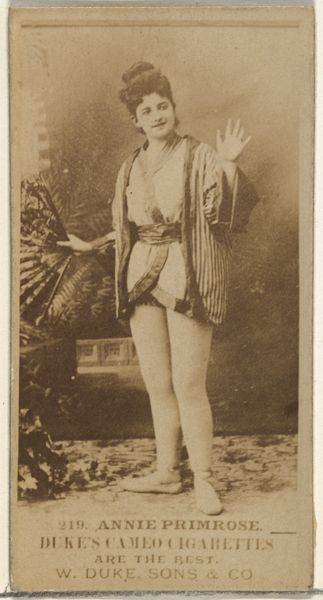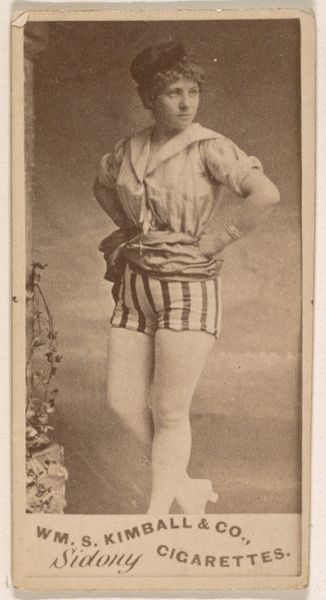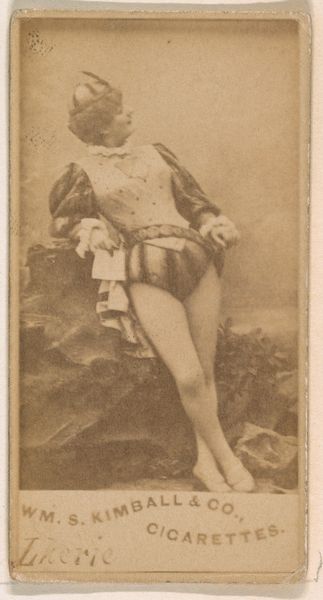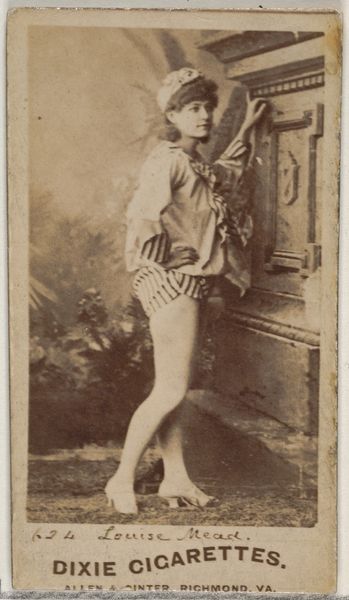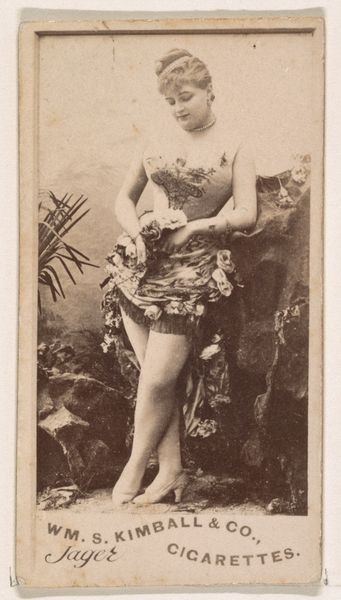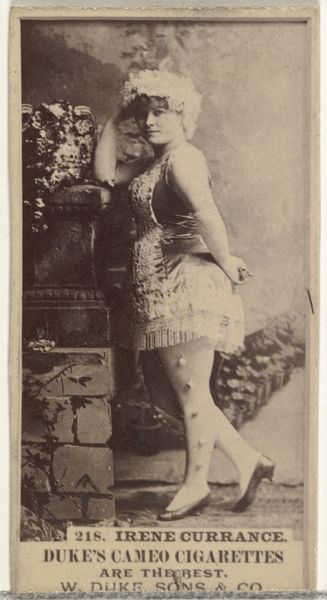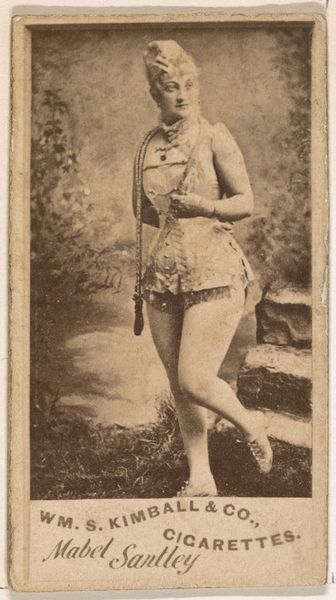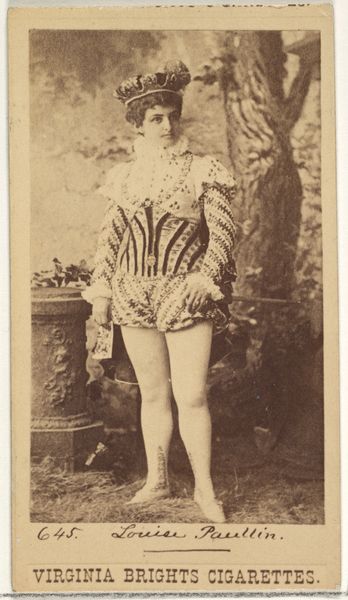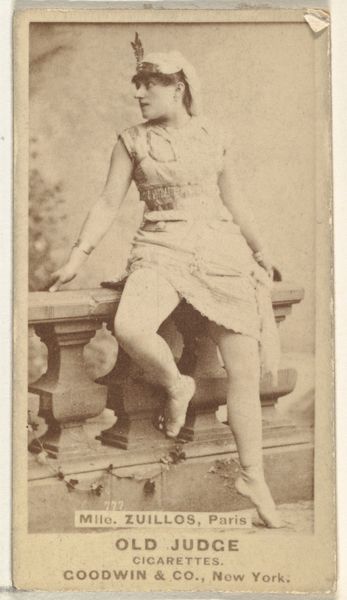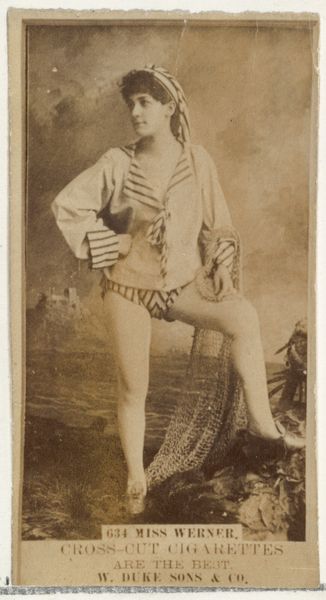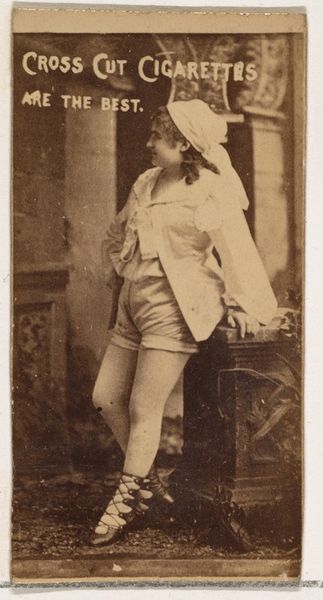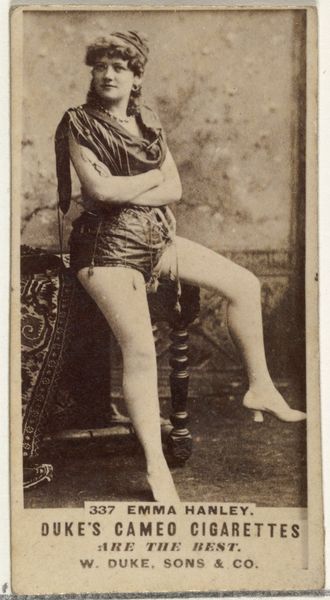
Card Number 644, Hattie Robins, from the Actors and Actresses series (N145-3) issued by Duke Sons & Co. to promote Cross Cut Cigarettes 1880s
0:00
0:00
drawing, print, photography
#
portrait
#
drawing
# print
#
photography
#
academic-art
Dimensions: Sheet: 2 11/16 × 1 3/8 in. (6.8 × 3.5 cm)
Copyright: Public Domain
Curator: Ah, yes, "Card Number 644, Hattie Robins," produced by W. Duke, Sons & Co. in the 1880s as part of their Actors and Actresses series to promote Cross Cut Cigarettes. The print quality itself suggests a mass-produced commodity object, designed for wide circulation within a consumer market. Editor: It's quite striking, even today. The sepia tone gives it an antique feel. How do you interpret its place within the broader context of art history, especially considering it was essentially advertising? Curator: That's precisely the interesting point. We should not simply separate "art" from objects with a very clear commodified purpose. This was circulated as a giveaway to promote cigarettes. Think about that. The photograph itself is part of a process. Photography makes a specific kind of image, it's turned into a print, and packaged into cigarettes, consumed until there is nothing left. Editor: So you see the value more in its creation and use rather than any artistic merit, is that fair? Curator: Exactly. Consider the labor involved – from the posing of the model and setting up of the photographic shot, to the industrial printing process. It all highlights labor exploitation. Furthermore, think about the viewers as consumer. Editor: That really reframes how I look at it. I tend to focus on the image itself, but I see how easily you can deconstruct it by considering all of these extra steps! I wonder how attitudes about the commodification of art have shifted. Curator: Indeed, by focusing on its production, circulation, and reception, this card reveals the intersection of entertainment, consumerism, and industrial labor in the late 19th century. I think we both are now in a much better place to reflect on that.
Comments
No comments
Be the first to comment and join the conversation on the ultimate creative platform.
